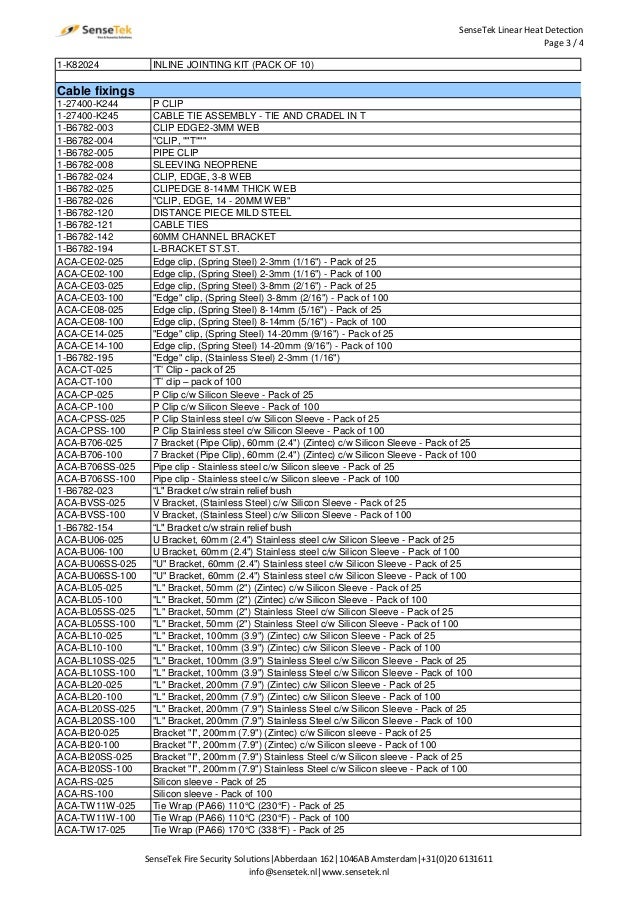Linear Heat Cable Fixings
Lhdc should not be in contact with any material that can act as a heat sink.
Linear heat cable fixings. The cable should not be in contact with any material that will act as a heat. Patol supply a full range as shown over the page. Application fixings linear heat detection cable lhdc general guidelines for installation of lhdc. The analogue linear heat detection cable lhdc is designed to provide detection of fire and overheating in circumstances where other forms of detection would not be viable.
Each core is a tinned copper coated spring steel conductor and has special heat reactive polymer insulation. Digital linear heat detection cable. The correct size and type of cable gland must be used on all junction box etc. Patol supply a full range as shown over the page.
Linear heat detection cable. Linear heat detection clips fixings come in different variants. Before installing firesense 2000 linear heat detection cable reference should be made to the zone layout drawings fixing arrangement drawings and the following points should be observed. Digital lhdc operates at fixed temperatures and is non resettable.
The digital linear heat detection cable comprises of a twisted pair two core cable. Application fixings linear heat detection general guidelines for installation of lhdc. The below drawing represents various clips and fixings that can be used in a typical cable tunnel. The correct size and type of cable gland must be used on all junction box etc.
Application fixings linear heat detection cable lhdc general guidelines for installation of lhdc. Lios de tect is a robust linear heat detection system based on optical fibers. The taichung power plant is the largest coal fired power plant in taiwan and the third largest in the world. Linesense provide the following selection of fixings and clips to retain the linear heat detection lhd cable in place.
Due to the high impedance of the system all connections at zone monitors eol jb. Linear heat detection fixings and brackets. Fixings should be placed at intervals of no more than 1 2m apart. With a range of up to 10 km and a sampling interval down to 25 cm the system is ideal for fire detection in tunnels and metros as well as large facilities like warehouses and industrial facilities.
This can be due to either inability to sustain environmental requirements or through prohibitive costs. The below drawing represents various clips and fixings that can be used in a typical cable tunnel. The correct size and type of cable gland must be used on all junction box etc.












































